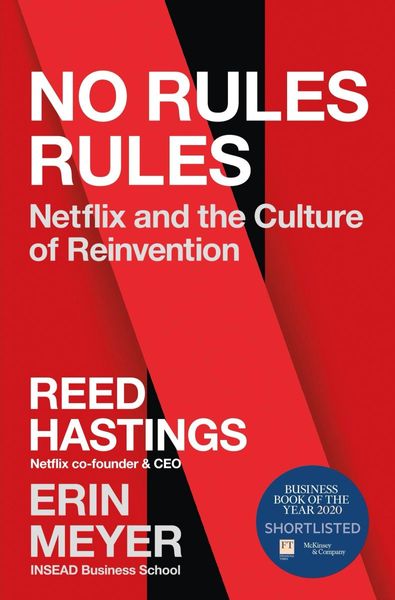
No Rules Rules Netflix and the Culture of Reinvention
*** Longlisted for the 2020 Financial Times & McKinsey Business Book of the Year *** It's time to do things differently. Trust your team. Be radically honest. And never, ever try to please your boss. These are some of the ground rules if you work at Netflix. They are part of a unique cultural experiment that explains how the company has transformed itself at lightning speed from a DVD mail order service into a streaming superpower - with 190 million fervent subscribers and a market capitalisation that rivals the likes of Disney. Finally Reed Hastings, Netflix Chairman and CEO, is sharing the secrets that have revolutionised the entertainment and tech industries. With INSEAD business school professor Erin Meyer, he will explore his leadership philosophy - which begins by rejecting the accepted beliefs under which most companies operate - and how it plays out in practice at Netflix. From unlimited holidays to abolishing approvals, Netflix offers a fundamentally different way to run any organisation, one far more in tune with an ever-changing fast-paced world. For anyone interested in creativity, productivity and innovation, the Netflix culture is something close to a holy grail. This book will make it, and its creator, fully accessible for the first time.
Reviews
Fred Rivett@fredrivett
Heiki Riesenkampf@hrk
matej yangwao@yangwao
Julien Sobczak@julien-sobczak
Evan Gusev@evangus
Aske Dørge@aske
Alex bell@redlion8
Benjamin Harrison@c0nsilience
Omar@omareduardo
Lance Willett@lancewillett
Daniel Bower@danielbower
Christian Beck@cmbeck
Peter Hagen@pha
Jose Quaresma@josequaresma
m k@keitmax
Sebastian Stoelen@sebastianstoelen
Lorenz Herrmann@lorenzherrmann
Linus Stieldorf@lks
Udit Desai@uydesai
Jorge Ruvalcaba@jorgearuv
Rina@rinareads
Julien Perrat@julien
Arihant Verma@arihant
Clive@clivereads
Highlights
Bu Kinoshita@bu
Bu Kinoshita@bu
Aske Dørge@aske
Aske Dørge@aske
Aske Dørge@aske
Aske Dørge@aske
Aske Dørge@aske
Aske Dørge@aske
Aske Dørge@aske
Aske Dørge@aske
Aske Dørge@aske
Aske Dørge@aske